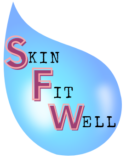Table of Contents
What Is GLA?
GLA stands for gamma-linoleic acid and it is an omega-6 polyunsaturated fatty acid. This fatty acid is found in a variety of plant oils as well as in human milk. In plants oils, the concentration of GLA differs. For example, in borage seed oil, it contains 21% GLA. Evening primrose oil contains 9% GLA (1).
Dietary Benefits of GLA
Studies have shown that those with dermatitis and eczema have a deficiency in essential fatty acids in the skin. Daily doses of oils high in linoleic acid were used to provide relief of eczemic symptoms (1). Oral consumption of oils contains GLA has been shown to improve inflammatory diseases such as rheumatoid arthritis and dermatitis on the skin.
However, with low subjects and subpar study designs, more research has been needed to conclude such claims.
The little data that we do have suggests that oral consumption of GLA rich oils can improve conditions such as asthma, other respiratory conditions, and improve the way insulin-resistant monkeys react to glucose (1).
There may be other metabolic as well as genetic factors that contribute to the benefits of GLA. GLA gets converted to dihomo gamma linolenic acid (DGLA) by enzymes. DGLA is found in higher concentrations in the body’s cells and lipids than GLA. The genetic differences in these critical conversion enzymes among different people affect how DGLA functions in the body. DGLA has been shown to present anti-inflammatory effects on the body.
Topical Benefits of GLA
Topical application of GLA can treat a variety of skin conditions such as eczema, acne, inflammatory conditions, skin dryness and other disorders in which the skin barrier is damaged. GLA supports the lipid structure of the skin, and provides moisture and suppleness to the skin (2). It repairs the skin barrier and prevents transepidermal water loss from occurring. This essential fatty acid protects the skin barrier, which allows the skin to keep out microbes and other infection-causing substances that may contribute to acne formation and other skin conditions. The hydration in the stratum corneum is imperative to the functioning of the skin. Application of GLA supports adequate hydration.
Consuming GLA orally may have it’s downfalls, so it may be better to apply it topically to the skin. Since the body must metabolize the consumed GLA, the liver may oxidize a significant portion of it before circulating throughout the body. Topical application of GLA means that it can be directly applied to the skin and absorbed by the skin to attain its benefits.
Benefits of GLA For Acne
In one study of patients suffering from acne who consumed GLA, the amount of inflammatory and non-inflammatory lesions were significantly reduced after 10 weeks of treatment. No side effects were reported. Not only did patients see improvement in their skin on their own accord, but biological staining analyses were done to show a reduction in inflammatory substances in the skin (3).
Combination therapies in dermatology are an effective way to reap the benefits of two or more treatments for acne and other skin conditions such as rosacea. One therapy may enhance the effectiveness of the other. In the case of GLA, oral consumption of this oil in addition to an antibiotic such as minocycline can greatly reduce the severity of papulopustular rosacea (redness that presents itself with bumps and white heads). In one study, patients had a significant improvement in redness and pustules with 8 weeks of treatment with both GLA and minocycline.
How Does Evening Primrose Oil Help Acne?
Oral consumption of evening primrose oil (EPO), which contains GLA, has been shown to improve skin conditions. In one study, volunteers who were taking Accutane for acne (an incredibly harsh treatment that halts oil production in the body, causing excessive amounts of dryness, especially around the lips), also consumed EPO tablets. The results? The patients had less transepidermal water loss on the lips, more hydrated skin around the lips, and overall had a better appearance (4). This suggests that EPO can restore hydration and improve skin barrier function which in turn helps acne symptoms such as peeling and inflammation in the skin.
Can You Put Evening Primrose Oil Directly On Your Face?
Evening primrose oil most often comes in a capsule form. They are available over-the-counter and can be found at a variety of food stores and grocery departments. This has a good level of GLA and applying the oil to the skin may directly supply the skin with lipids to support the skin barrier. It is important to note that any application of oils on the skin can lead to irritation or breakouts in those with sensitive skin or who are prone to breakouts. It is best to patch test an area of the skin with a small amount of the oil to see if it works for you.
References
- https://www.ncbi.nlm.nih.gov/pmc/articles/PMC4975646/#!po=8.46154
- https://lpi.oregonstate.edu/mic/health-disease/skin-health/essential-fatty-acids#topical-delivery
- https://pubmed.ncbi.nlm.nih.gov/24553997/
- https://www.ncbi.nlm.nih.gov/pmc/articles/PMC4252667/


Pingback: Borage Seed Oil Vs Rosehip Oil For Post-Inflammatory Erythema | Skin Fit Well